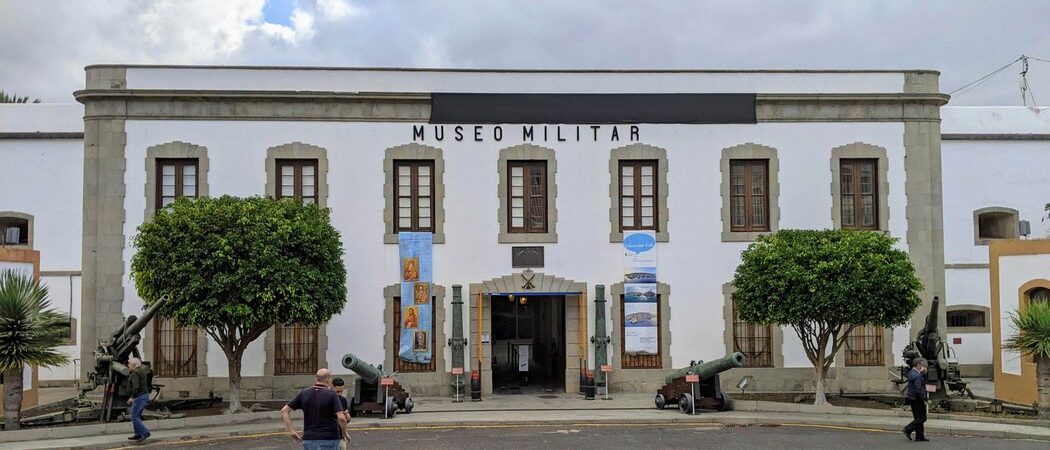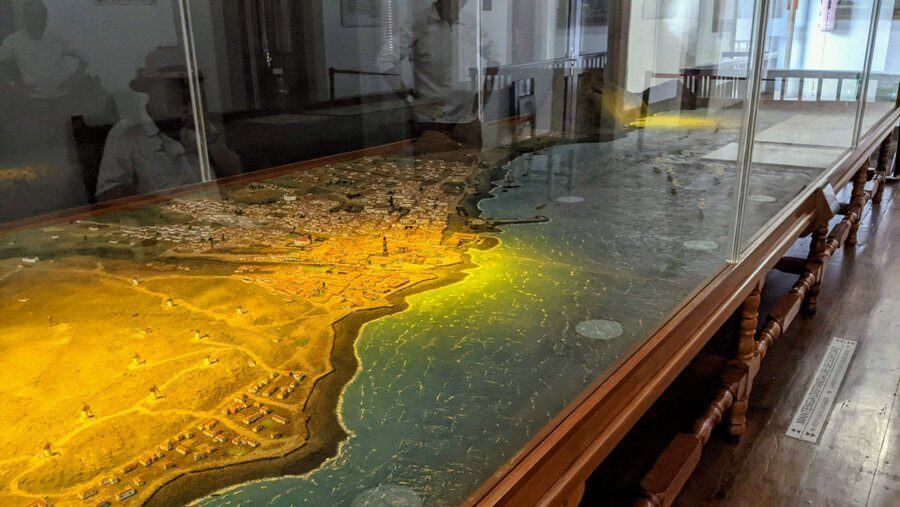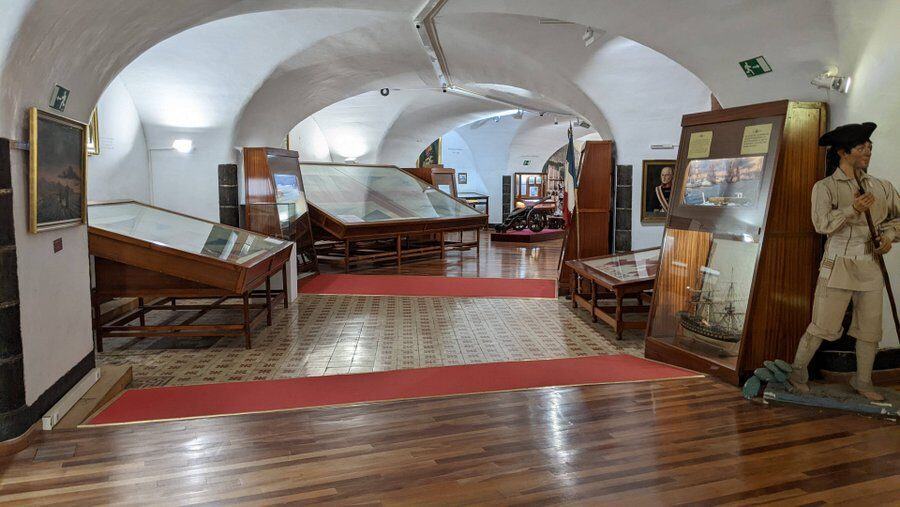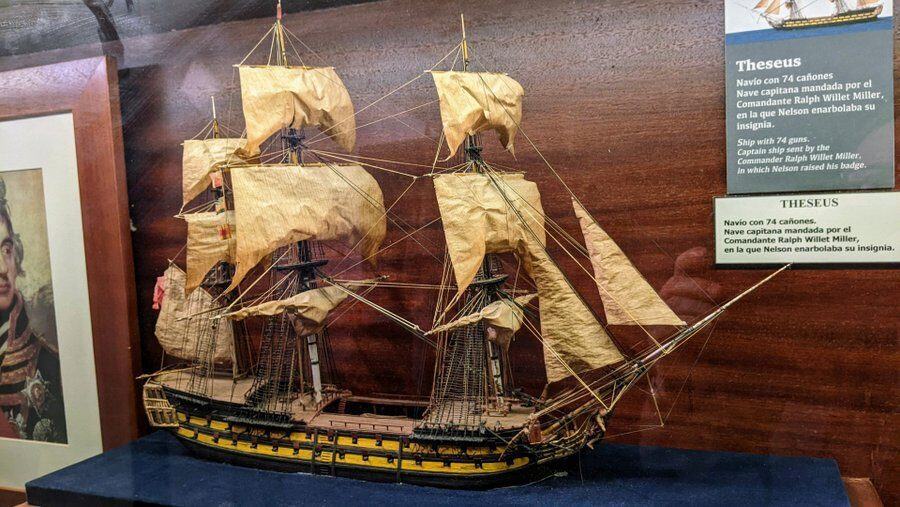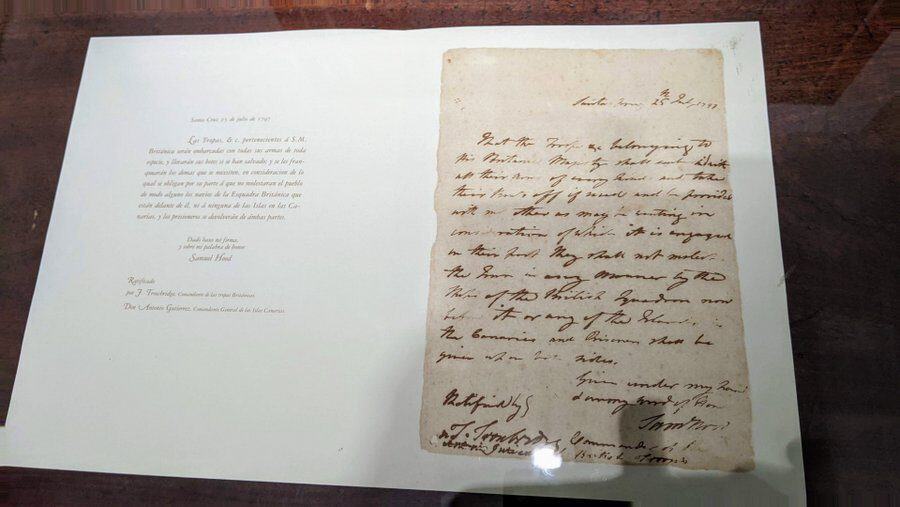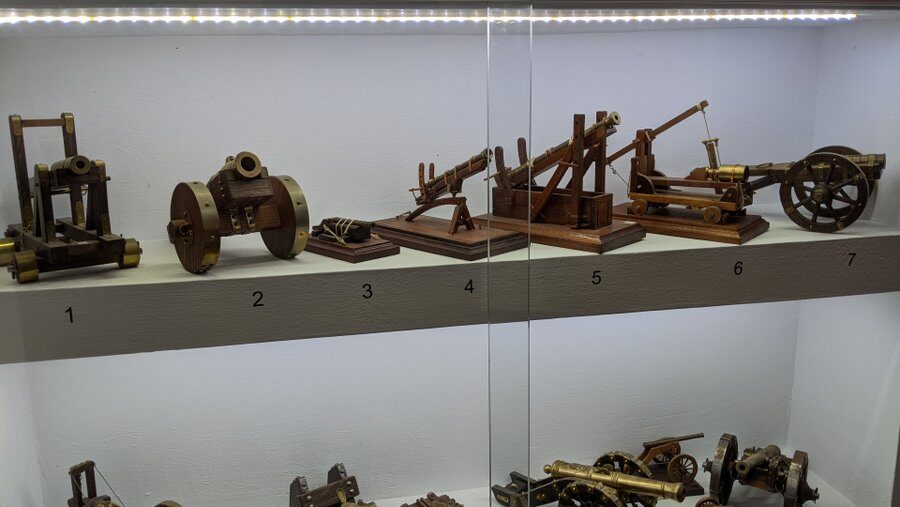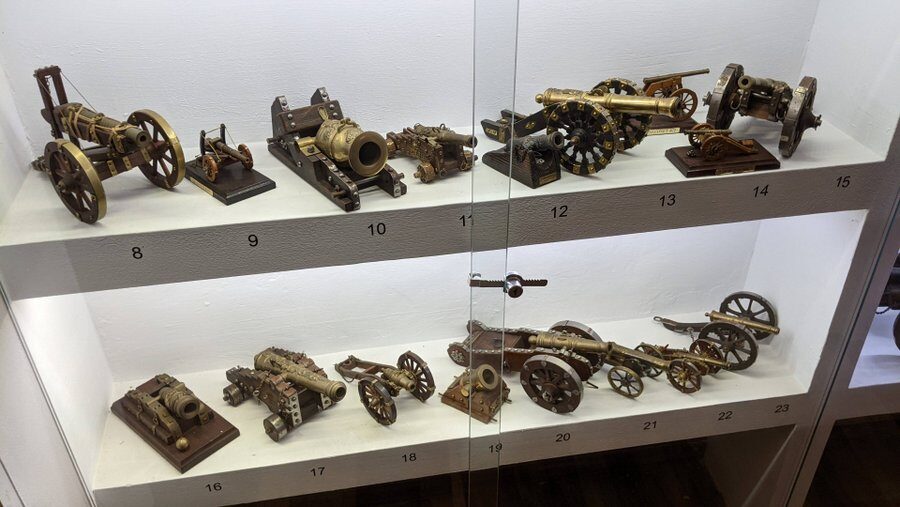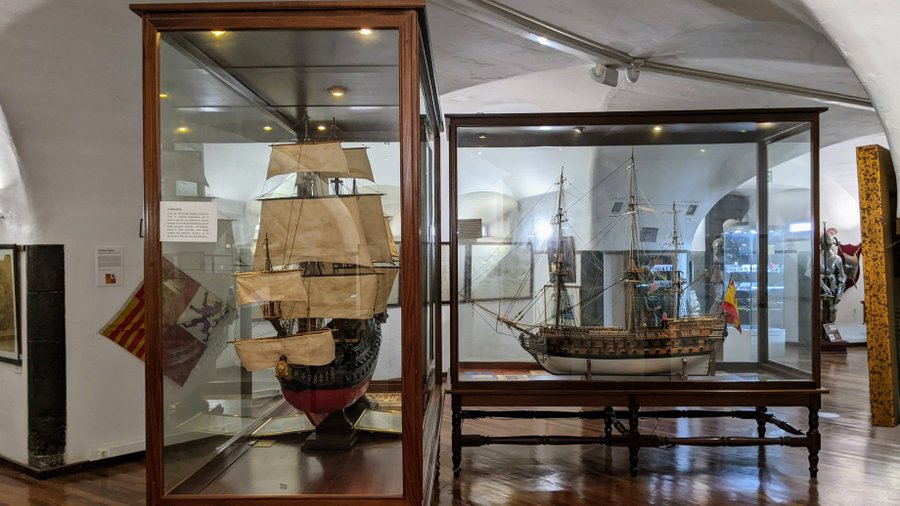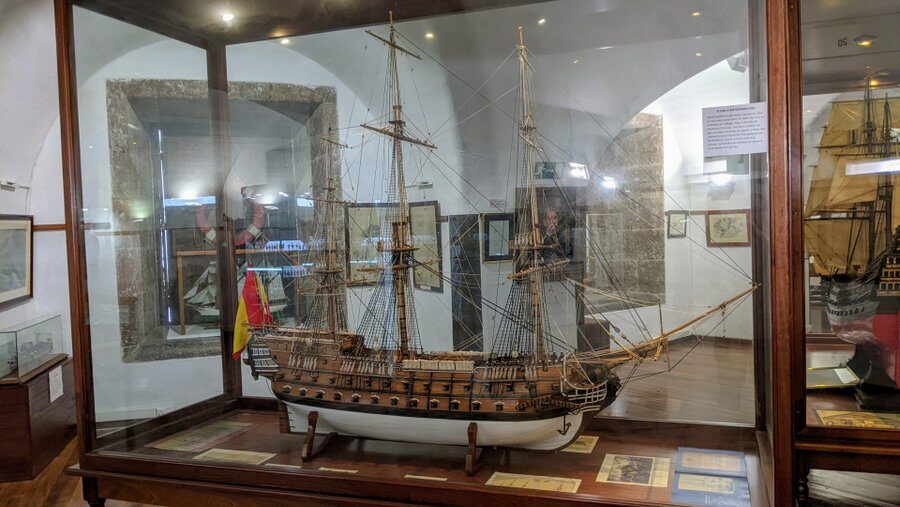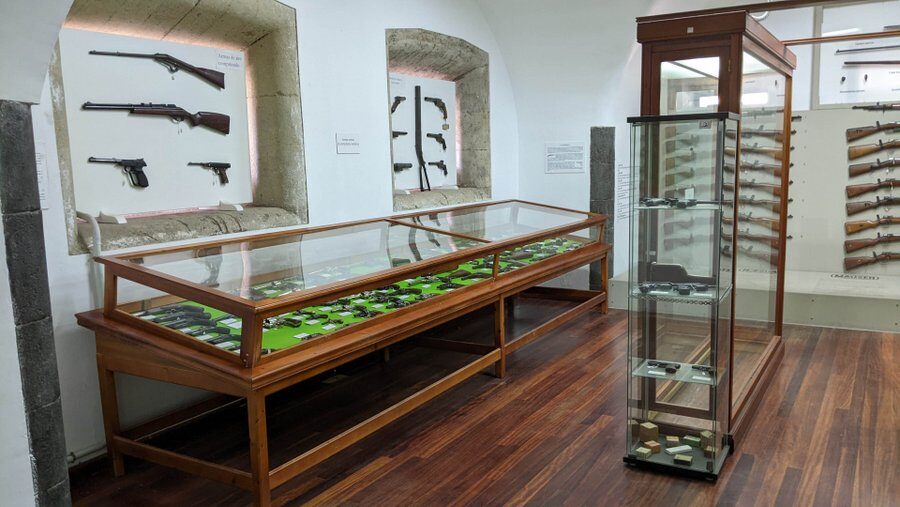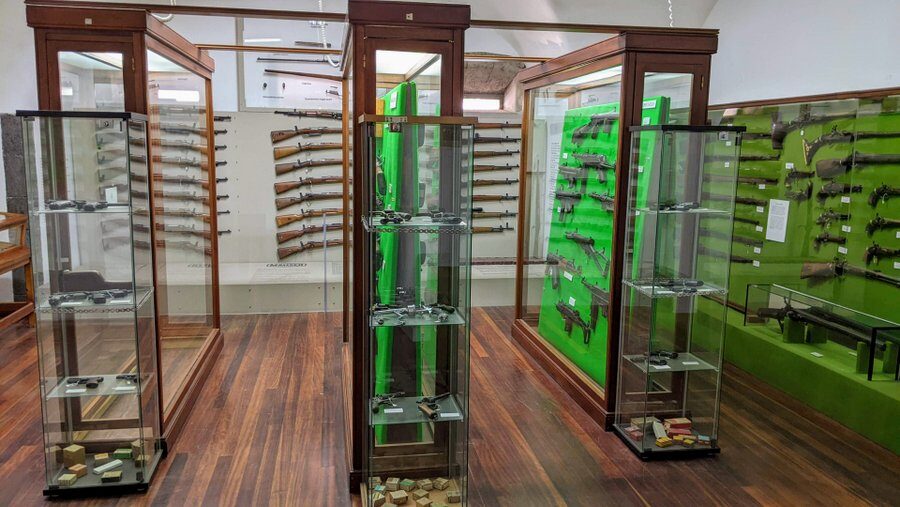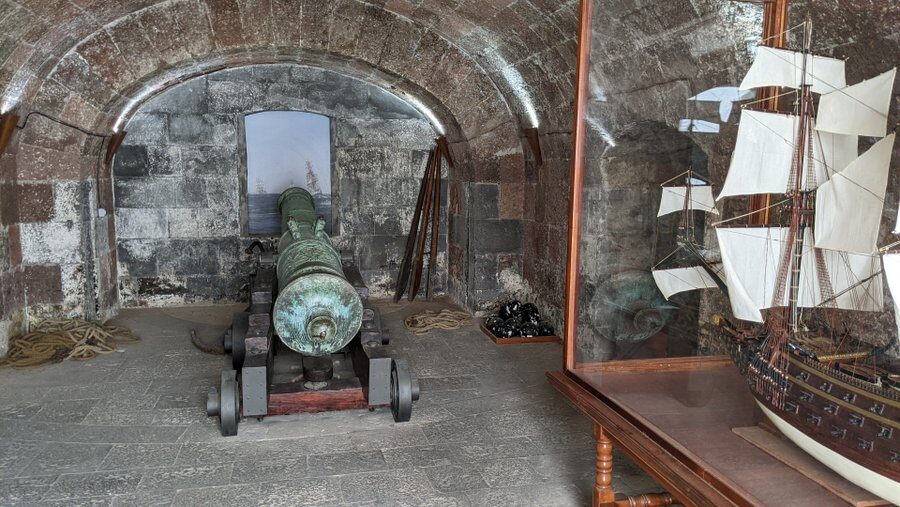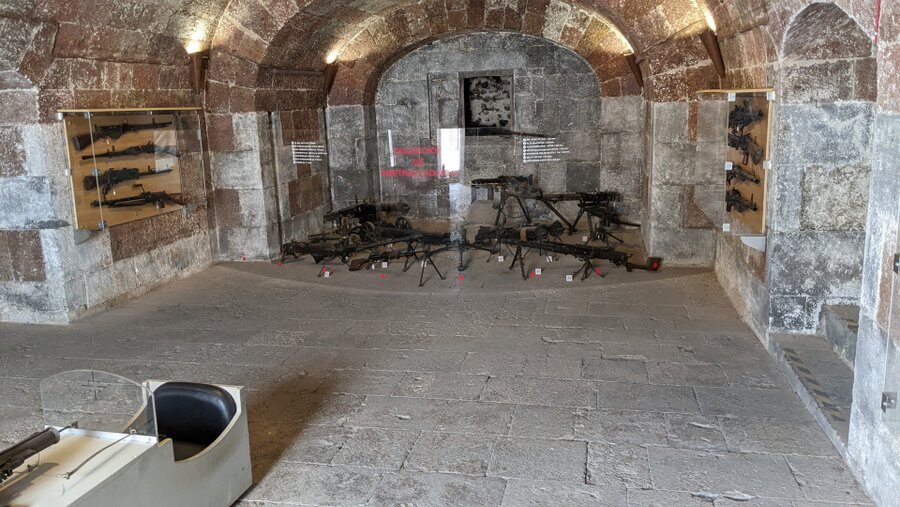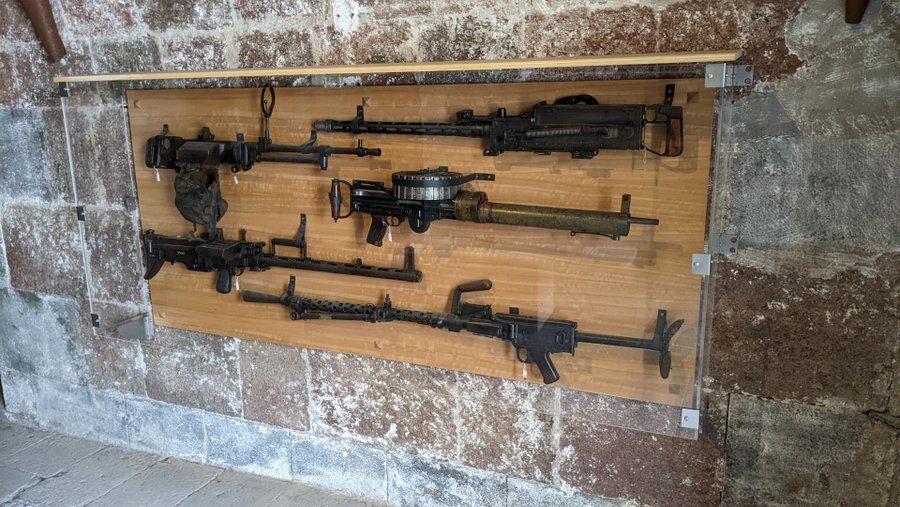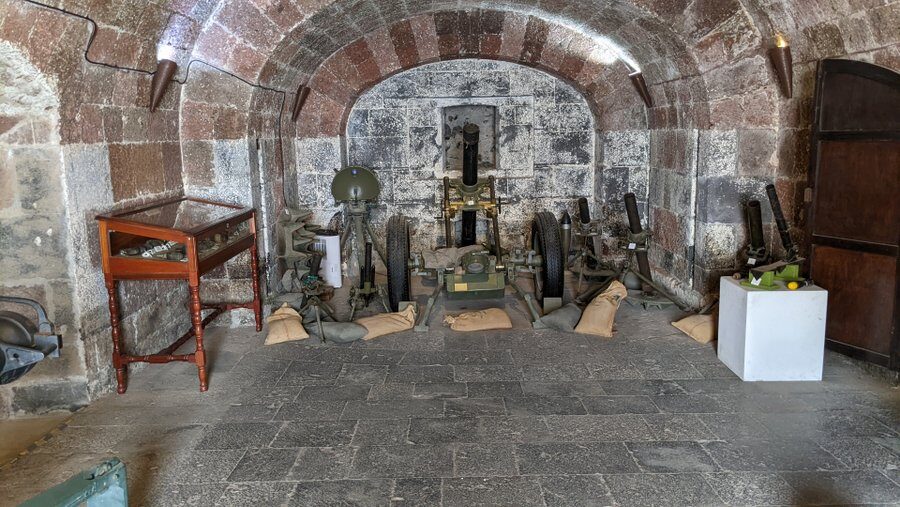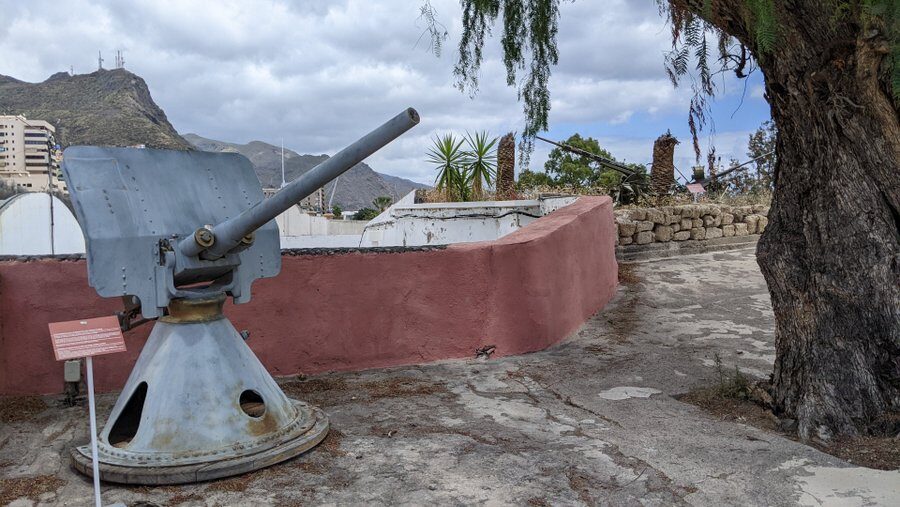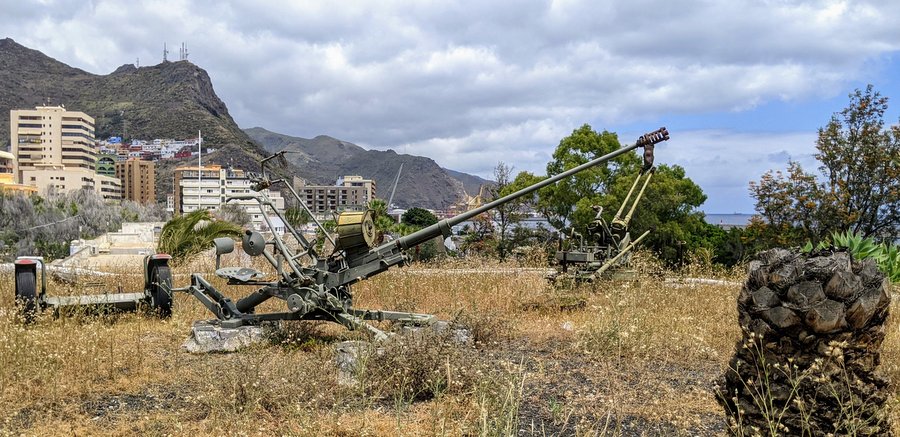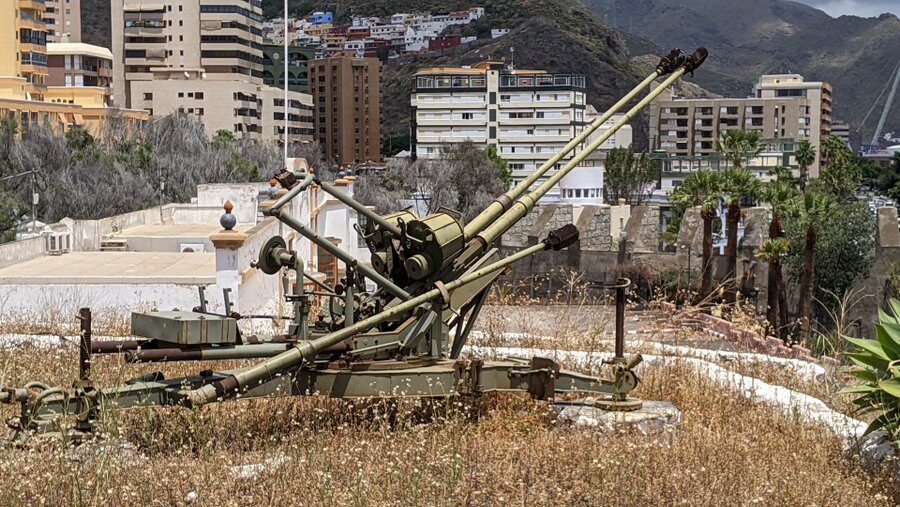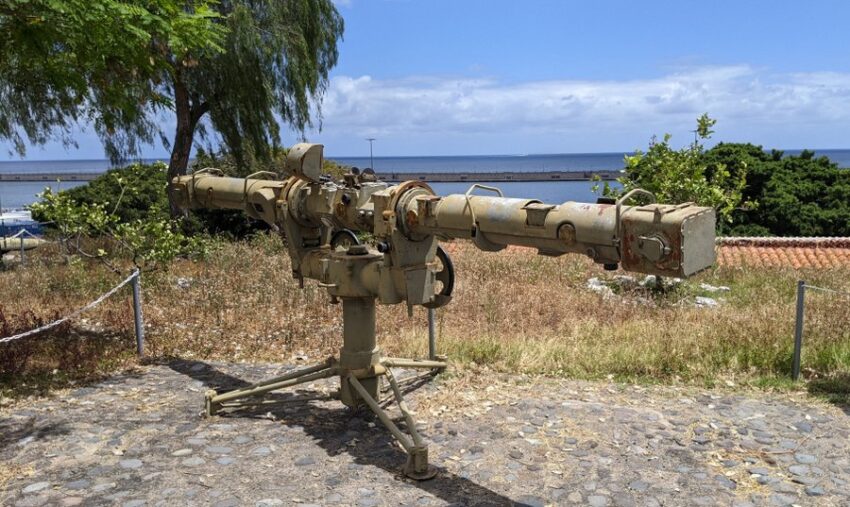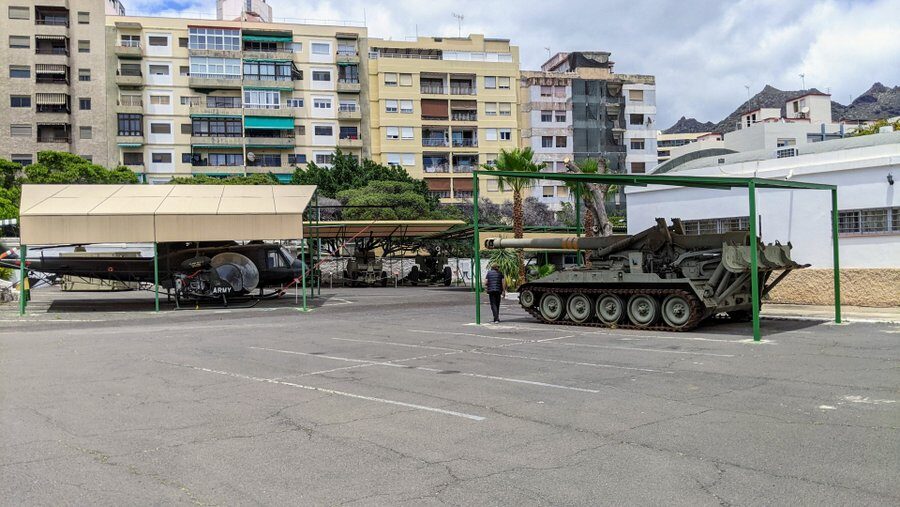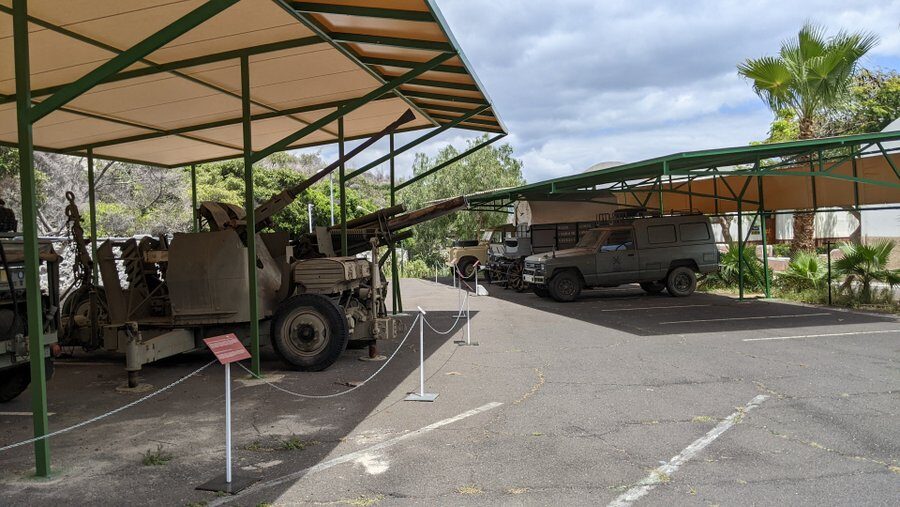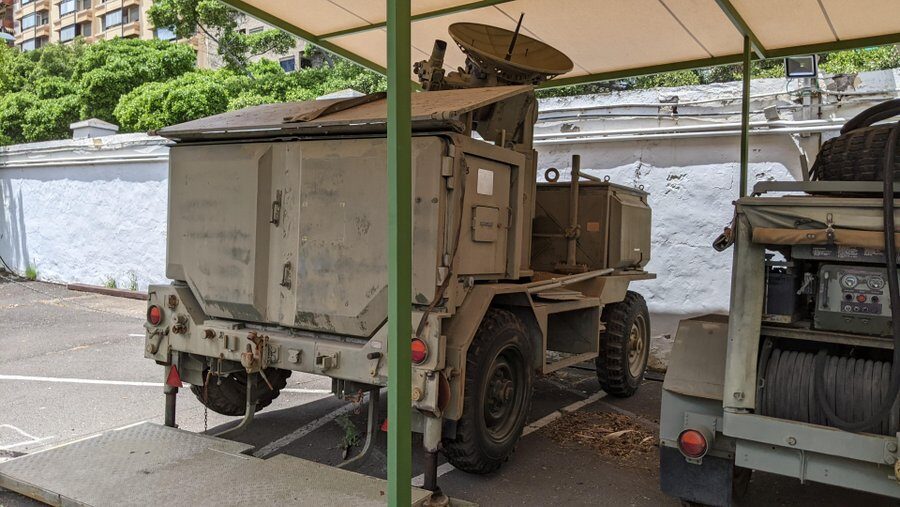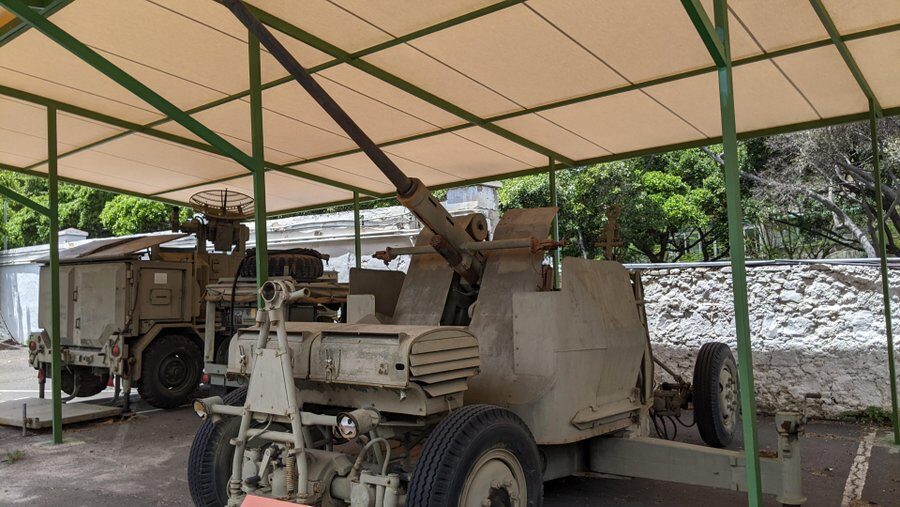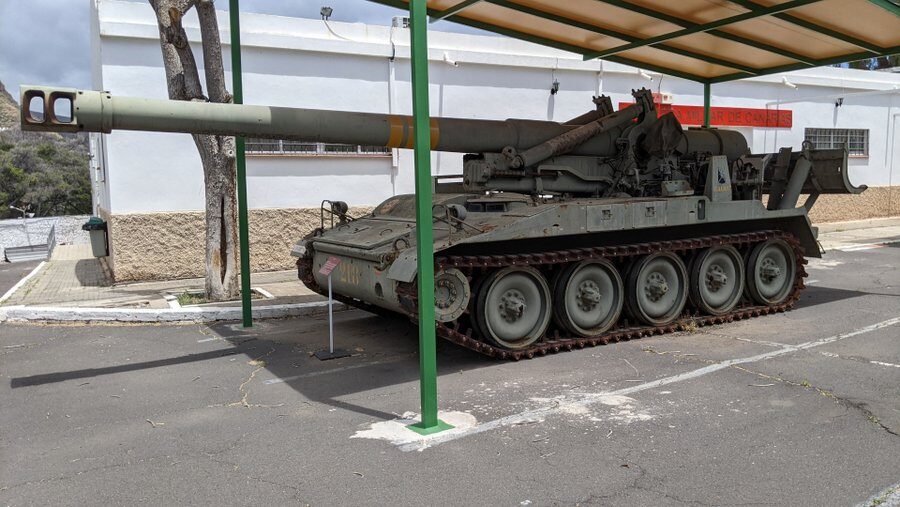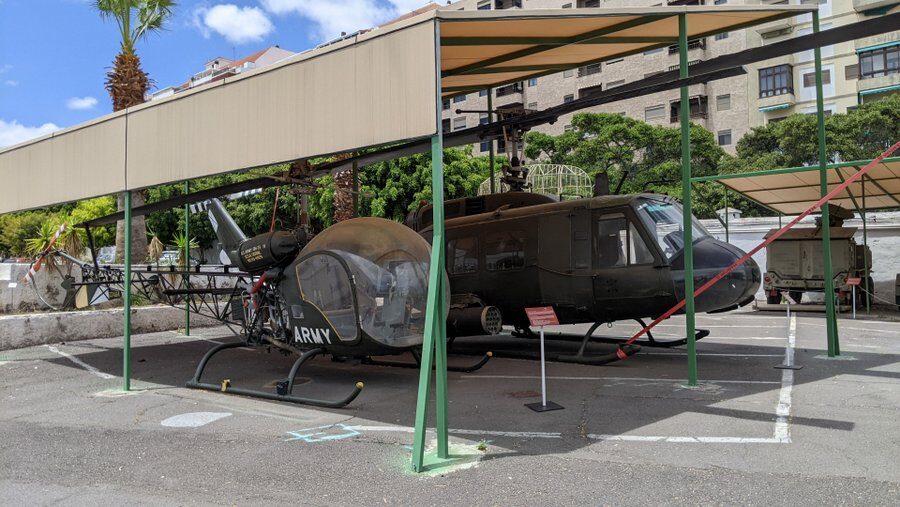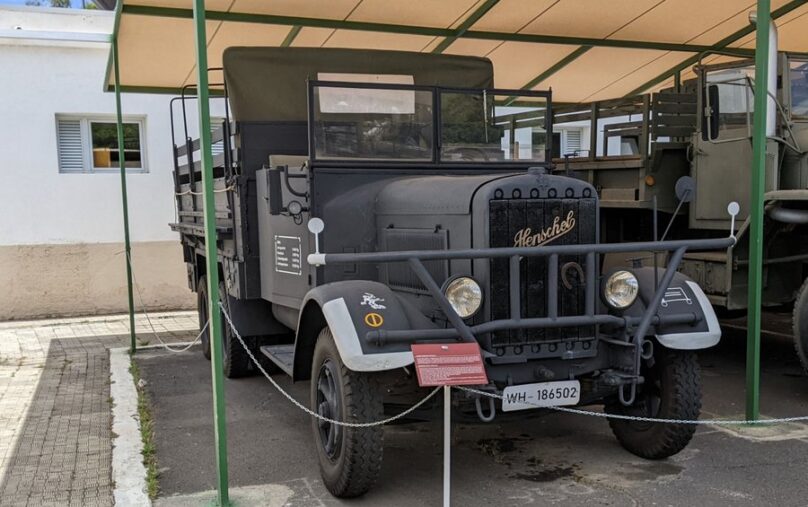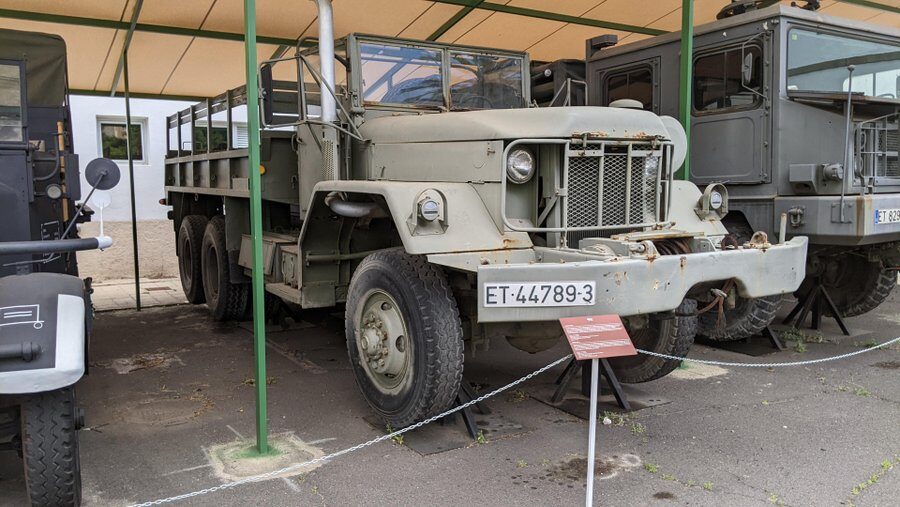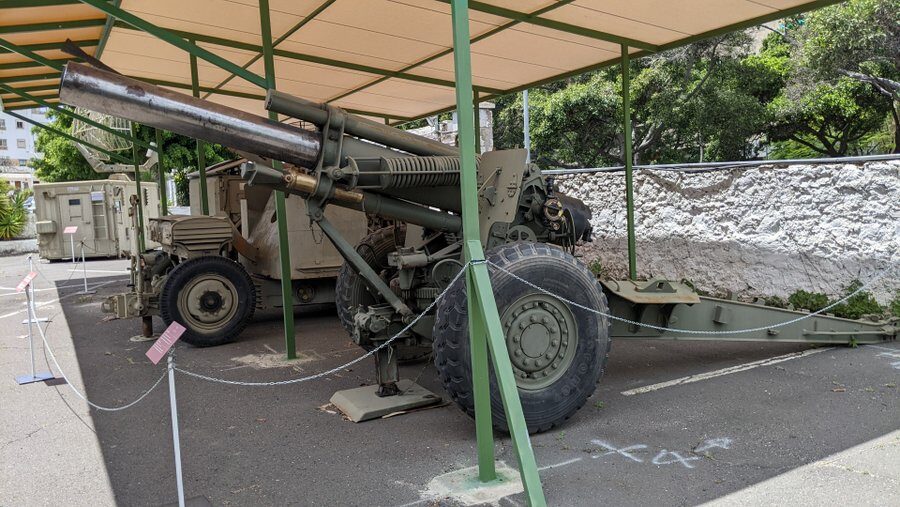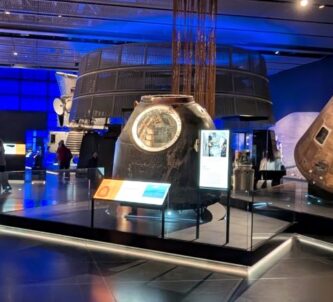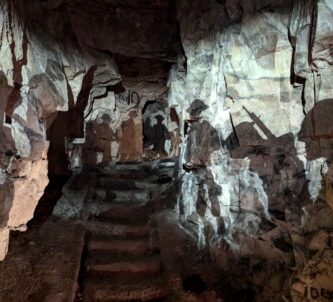The Military Museum of the Canaries in Santa Cruz de Tenerife covers the military history of the Canary Islands (Spain) from the 15th century to present day.
It is housed in the Almeyda fortress, which was built to strengthen the capital’s defences after Admiral Nelson’s failed attack in 1797, and it contains some key artefacts from that engagement. Mind you, it took the authorities a while to get started. The works did not begin until 1859, and took 25 years to complete.
Since then it has been in the control of the Spanish military, and despite opening to the public in 1988, it is still a military establishment.
The Spanish liked to give their guns namesIt is not, as I expected, a small museum. The fortress is really quite large and the museum makes use of both the inner redoubt and the outer walls to display its 1,200* treasures in almost a square kilometre of space (900m²).
The front of the museum has a range of guns, from WW2 Anti-Aircraft guns to 18th century bronze cannons. The Spanish liked to give their guns names; the cannon that peppered Admiral Nelson’s arm with grapeshot is called ‘El Tigre’ (The Tiger)**, the giant cannon inside the museum is called ‘Hercules’, the two little bronze cannons nearby are ‘El Gato’ (the cat) and ‘El Miserable’ and the cannon to the left of the entrance is ‘El Orible’!
Also commanding attention as you walk in through the gate is a M41 Walker Bulldog light tank. It’s an American tank, introduced in 1951, which saw service in the Korean & Vietnam Wars, and was sold to a number of nations including Spain. I don’t think I’ve seen one before.
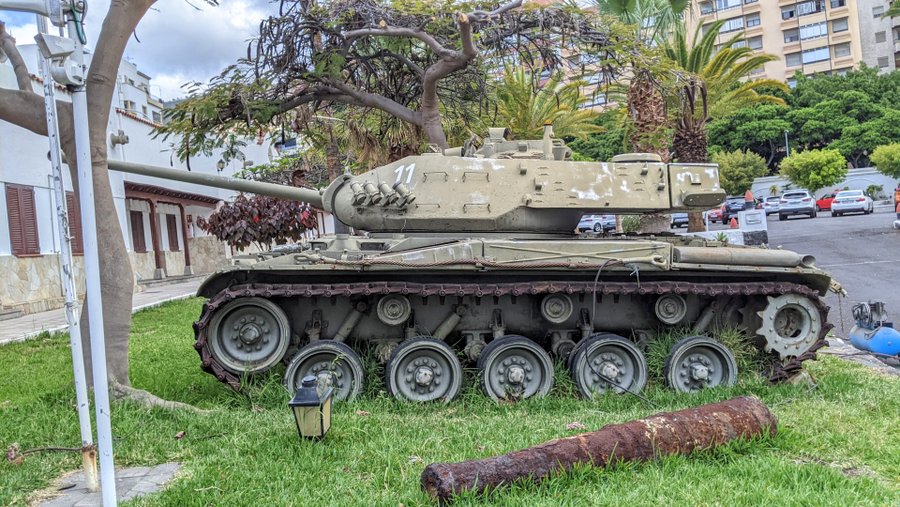
Now don’t pick me up for saying this – I think it’s a pretty tank. It’s a proper tank-shaped tank!
Military Museum of the Canaries – Inside the Redoubt
Once you pass through the entrance building, which is decorated with some impressive cannon, you come into the semi-circular redoubt itself. There are two floors of galleries, but the central courtyard is worth a look. The eye is immediately drawn to the massive Hercules cannon. This beast saw action against all three English fleets that attempted to capture Santa Cruz.
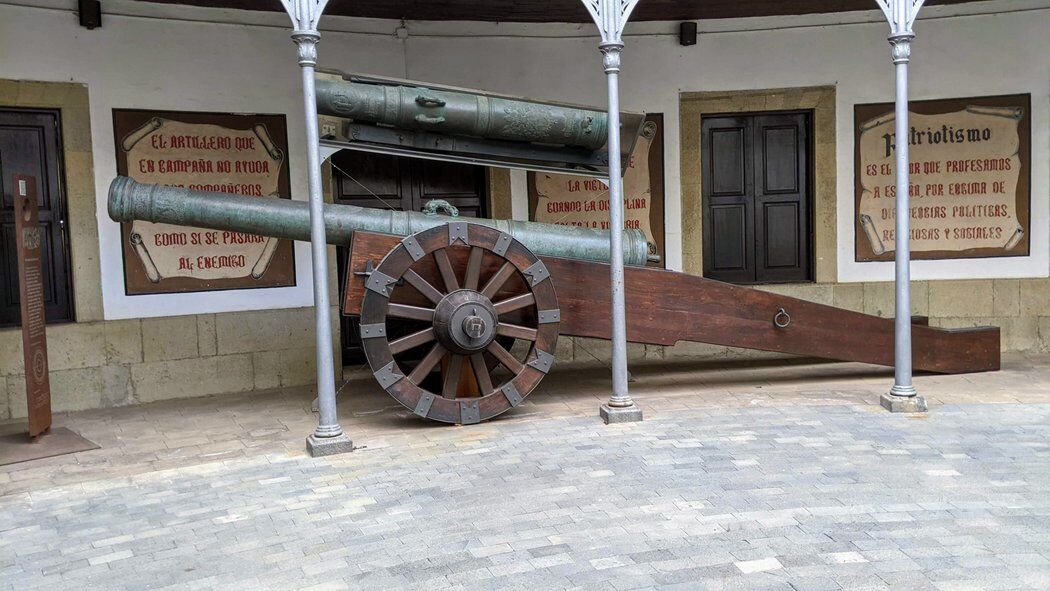
There are a number of other guns in the courtyard. This gun (below) is quite a rare piece; you don’t usually see them outside Spanish museums. It’s a Cañón de Montaña Schneider 75/22 M-1941.

Mountain guns are designed to break down into multiple parts so they can be transported, usually by mule, in mountain areas. This one was developed by the Spanish in 1941 (after the Spanish civil war) to replace the Schneider 105/11 Mountain Howitzer, which suffered from wear and fatigue issues. They made use of the existing WW1 carriage (hence the wooden wheels) and added a 75mm/22 cal gun to it. These were manufactured in Trubia, Spain, until 1944, and saw service in the Spanish army from the 1940s to the 1960s.
On the other hand, this German PAK 40 anti-tank is not rare. It’s one of many that became available after WW2, in this case to the Spanish army, and you often find them in military museums.
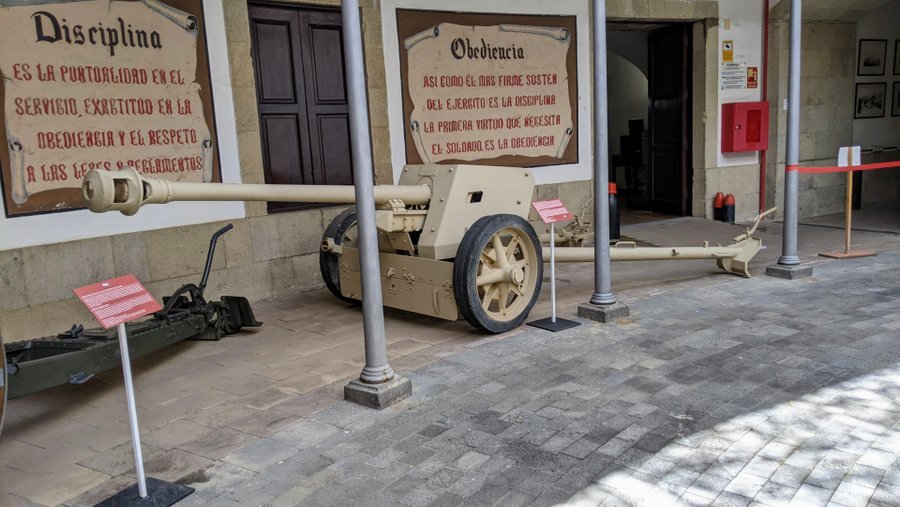
If you look up you will see a set of water-spouts around the roof. These were designed to channel rainwater into the courtyard. In the centre on the floor, you’ll notice the grate through which the rainwater was collected into the cistern below. For a bit of fun, go and stand on the grate and speak – you’ll hear your voice echoing back from the stone walls.
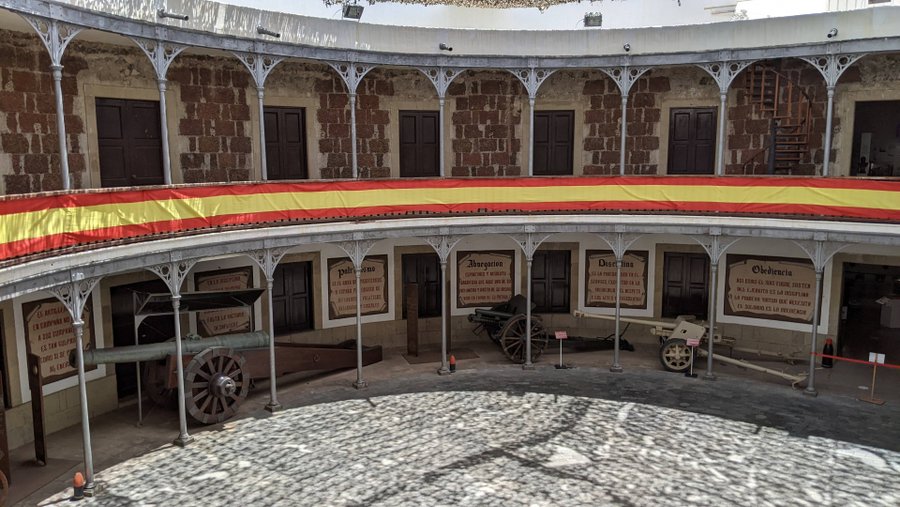
There’s a choice when you leave the courtyard; you can first tour the semi-circular ground floor galleries, or walk upstairs and go around the 1st floor galleries.
Military Museum of the Canaries – 1st Floor Galleries in the Redoubt
The 1st floor galleries are where the artefacts from the Battle of Santa Cruz 1797 are displayed. They include the desk on which the truce was signed, the truce document itself, some battle flags taken on shore by the British and subsequently captured, a copy of Nelson’s summary report to the Admiralty published in the London Gazette, and a set of models of Nelson’s fleet. There’s also a large animated (illuminated) diorama explaining the battle.
The battle of Santa Cruz takes up most of the space in the 1st floor galleries, but before it there are a few items dating back to the 16th century, and after it there’s a gallery of images and documents relating to the Rif War 1921-1926.
It’s not very well-known in Anglophone world. The Berbers in the Rif mountains of Morocco revolted against the Spanish colonial authority. The revolt was finally put down by the Spanish with support from the French in the first demonstration of ‘combined arms’ landings and assault, with ships, tanks and aircraft.
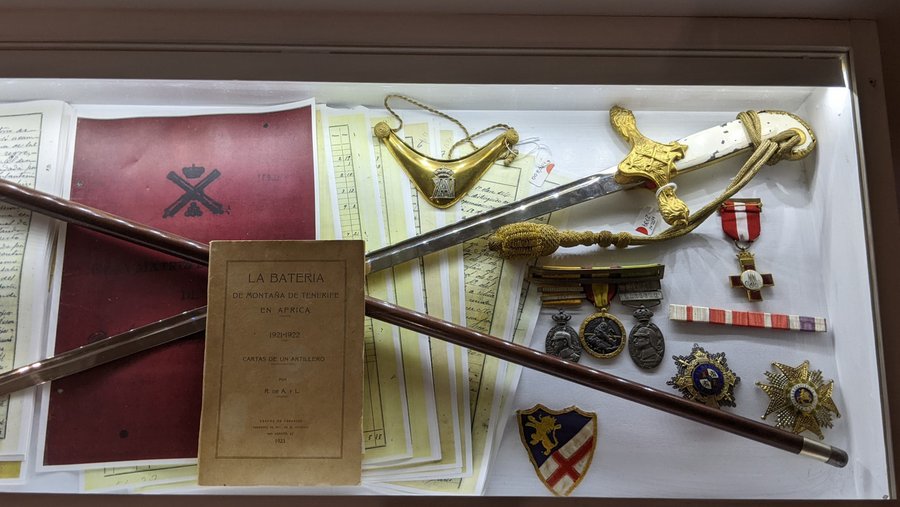
Tenerife had ‘skin in the game’. 184 artillerymen from the mountain battery at San Cristóbal de La Laguna were dispatched to go and fight. Some of the regiment’s artefacts are on display.
Military Museum of the Canaries – Ground Floor Galleries in the Redoubt
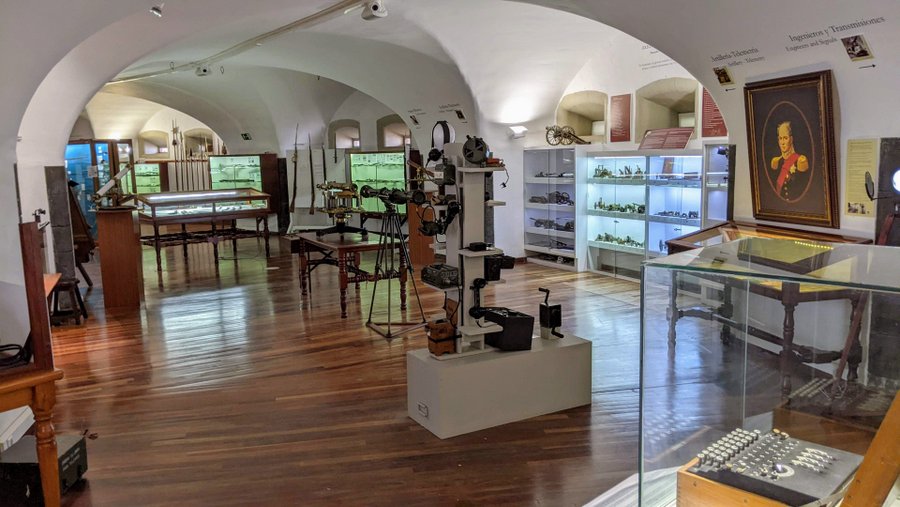
This was quite a surprise. There was some fun stuff in here.
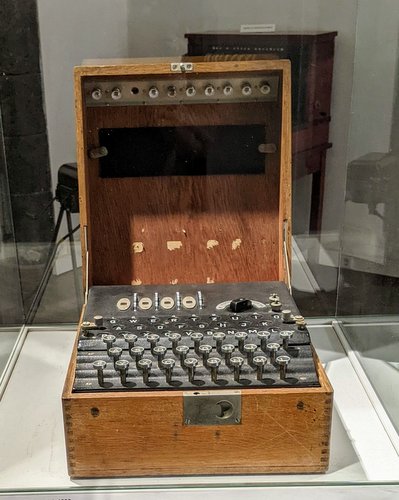
I wasn’t expecting to see an Enigma machine. They are not particularly rare (there are still around 300 in existence), but I tend to think that having one gives a museum credentials – bit daft, I know!
The Third Reich secretly gave General Franco a number of early D-type Enigma machines during the Spanish Civil War. This machine, No A-1232, was one of them. It was discovered, with 25 others, in the Army Headquarters in Madrid in 2008.
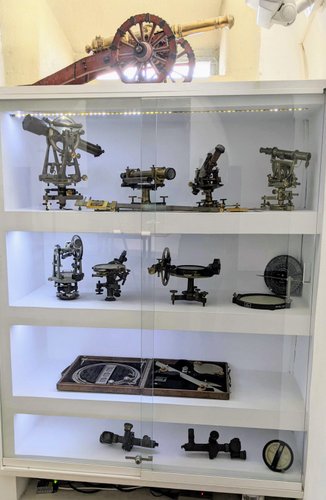
The galleries, if you are going in a clockwise direction, start with a section labelled ‘Artillery & Telemetry’. It has some historic equipment from the Signals corps and some spectacular antique theodolites and sighting gear from the Engineers. This is a part of the museum I wish I had more time to explore, although it really could use more signage, in Spanish and English.
If you are into models – who isn’t? – then the collection of miniature artillery pieces will delight you. They remind me of some of the artillery models in the Musée de l’Armée (Army Museum) in des Invalides, Paris. These exquisite models were made and donated by Lieutenant General Fernando Pardo de Santayana y Coloma in 1995.
The next section focuses on “cold weapons” (swords & pikes) and then “hot” – muskets to modern rifles. And here is something I didn’t know…
In 1523, during the highly complicated ‘Italian War’ – sometimes referred to as the “Four Year War” (another war Anglophones know little about) – The Spanish and English were besieging the city of Bayonne in Navarre. When the defenders ran out of ammunition, they tied their sabres to the barrels of their muskets so they could use them as pikes. Hence the word “bayonet”!
The penultimate section on the ground floor is dedicated to Spanish military uniforms, medals and accessories.
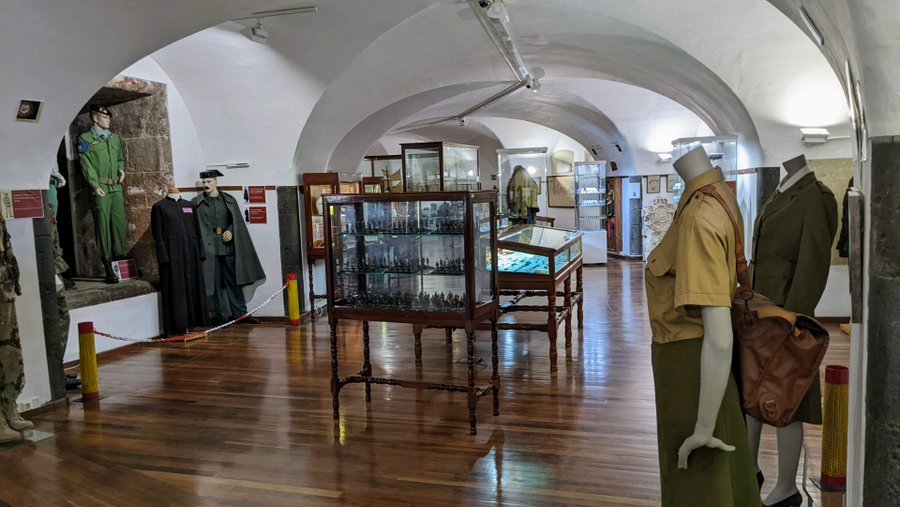
There’s also a collection of miniature lead soldiers and two splendid ship models – the San Juan Nepomuceno and El Real Filipe.
Finally there’s the armoury; a room full of small arms. Again, somewhere I’d have liked to spend more time.
Military Museum of the Canaries – The Casemates
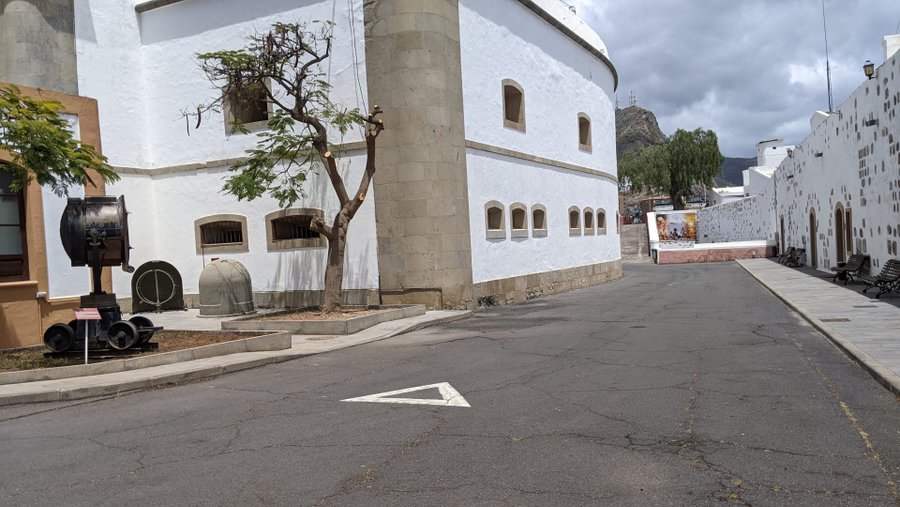
In the outer walls of the Almeyda fortress are the casemates for the cannon. The outer walls no longer encircle the redoubt, only the southeast walls facing the sea remain and the ramparts at the northeast end of the walls. These days the eight vaulted casemates serve as display spaces for the museum. Featuring mostly modern ordnance, particularly shells & mortars.
Military Museum of the Canaries – The Ramparts
Up on the top of the ramparts are a few guns and a rusty rangefinder, looking the worse for wear. The single barrelled 20mm Oerlikon (Swiss) was made for the Spanish infantry, under license in Plancencia de las Armas in the Basque country – a town famous for its armaments industry.
The guns of the double-barrelled version were made in the 1970s by Oerlikon but mounted together on a carriage designed and made by the Spanish arms designer/manufacturer Centro de Estudios Técnicos de Materiales Especiales (CETME). They were finally withdrawn from service in 2004.
There are also a couple of interesting items nearby…
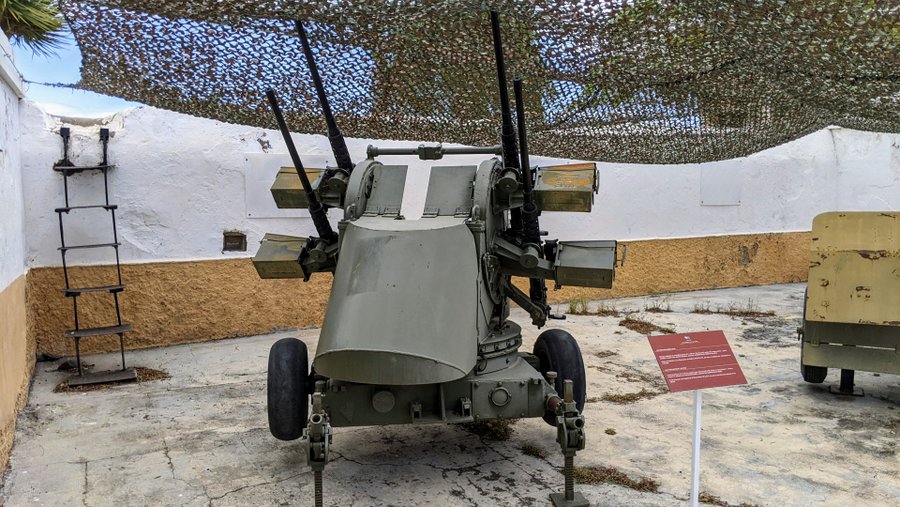
The American designed M-45 Anti-Aircraft gun with four .50 Browning machine guns. I’ve seen one of these before in the Menorca Military Museum (though technically, because of its slightly different trailer mount, theirs is an M-55! …yeah, I know!).
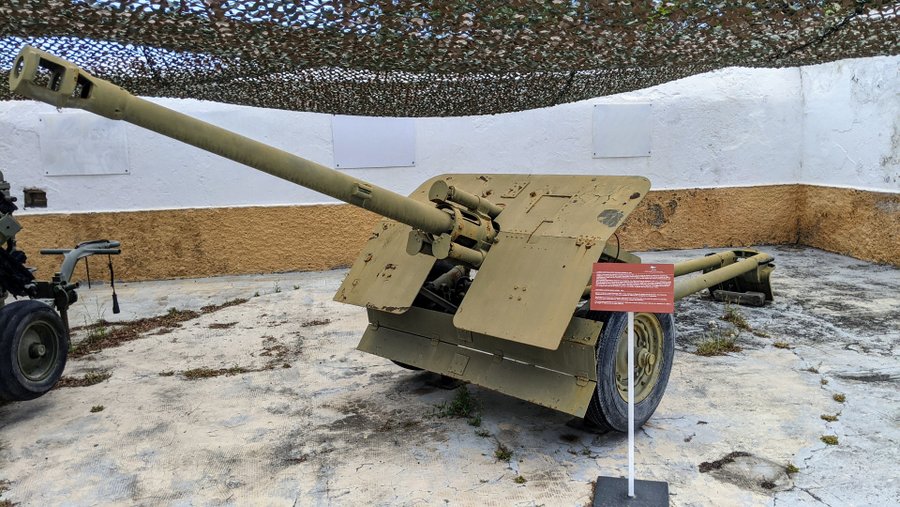
A Placencia 50/60 anti tank gun made in 1951. It is Spanish designed and was also manufactured by the Royal Cannon Factory in Placencia de las Armas. It fired armour-piercing rounds at 1,050 m/s that could pierce 129mm of steel armour at a kilometre range.
Military Museum of the Canaries – The Car Park
Out at the back of the museum there’s a car park with some interesting artillery, vehicles and other bits of large kit… and a couple of helicopters.
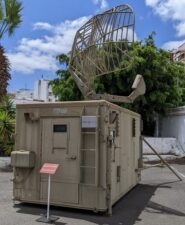
Mostly the equipment out in the car park area is American or European-made, like the 2-man Raytheon AN TPS-1G early-warning field radar for tracking aircraft at long ranges. Astonishingly these were first operational in 1944! This 1G model (left) was an improvement on the first AN TPS radars which could detect bombers at 10,000 feet at a distance of 120 nautical miles. Raytheon are still making AN TPS models now. The truck-mounted AN TPS-75 still performs the same function, only with better specs!
There are a couple of unique Spanish items out in the car park…

The Pegaso VEC (Vehiculo de Exploracion de Caballeria) cavalry reconnaissance vehicle was developed by Pegaso (“Pegasus”) in the late 1970s to meet Spanish Army requirements. Armed with a 20mm cannon and powered by a Pegaso turbocharged diesel engine, it carries a crew of 5 and is fully amphibious. It’s quite rare because although it was offered for export sales, there were no buyers, so Spain is its only operator. Pegaso, which manufactured trucks, buses, tractors & armoured vehicles, was subsumed into parent company, Iveco, in 1990 and made its last truck in 1994.
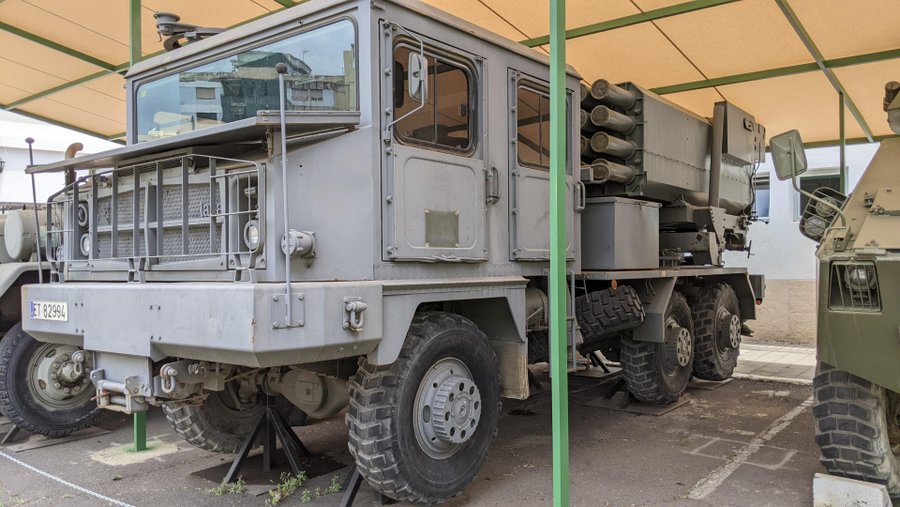
The Teruel T2 multiple rocket launcher was based on a Pegaso truck. It was in service with the Spanish Army between 1985 and 2011. It could launch 40 x 140mm artillery rockets in under 30 seconds, to a range of 25 kms.
During the Spanish Civil War, the powers supporting both sides sent large quantities of military aid. The Type 33 Henschel trucks came to Spain from Germany with the Condor Legion, and were kept going way beyond their normal lifespan. In 1954, more modern replacement trucks like the North American M-813 parked next door, began to turn up, and the Henschels were re-allocated to remote parts like the Canaries, where they would tow artillery like the M-114 155mm howitzer. 96 of these M-114 howitzers, dating from 1941, were sent to the Spanish Army under the American Aid programme between 1956 – 1960. They were allocated to artillery regiments deployed in the Canary Islands and Africa.
So…
I learned or discovered a number of things at the Military Museum of the Canaries, that I hadn’t known before; such as the ‘Rif Wars’ (the Spanish colonial war 1921-1926) and the Italian War in 1523 when the name ‘Bayonet’ was coined.
And another…
Even though it took them a while to build this fortress, it seems the Canarians’ instincts about “Perfidious Albion’s” ambitions for the islands were right… although it took a long time for them to manifest themselves!
During WW2 Franco’s Spain was ostensibly neutral, but both sides were interested in using the strategically-positioned Canary Islands. The Germans were denied their ambition to build a naval base here, although the authorities played a blind eye to the clandestine re-supplying of U-boats off the shores of some islands. The Allies, on the other hand, had fall-back plans (Operation Pilgrim) to capture the islands by force, if they lost Gibraltar.
It didn’t happen of course, but it’s curious to think that the Almeyda fortress may have eventually played the role it was designed for – to keep the English out!***
* The collection has around 3,000 items of which 1,200 are on display.
** You can see it in the little underground museum (under the pond) on the site of the San Cristóbal castle on the seafront.
*** Actually it was Canadian forces who were earmarked for taking the Canaries, but why ruin a nice pay-off!
Factbox
Website:
Disappointingly, there isn’t one.
Getting there: Museo Militar
C/ San Isidro, 1 (Castillo de Almeida)
Santa Cruz de Tenerife
The museum is on the edge of the old city, so a 10 minute walk from the centre of town.
Entry Price: Free
Opening Hours: Tuesday to Saturday from 10:00 to 14:00

